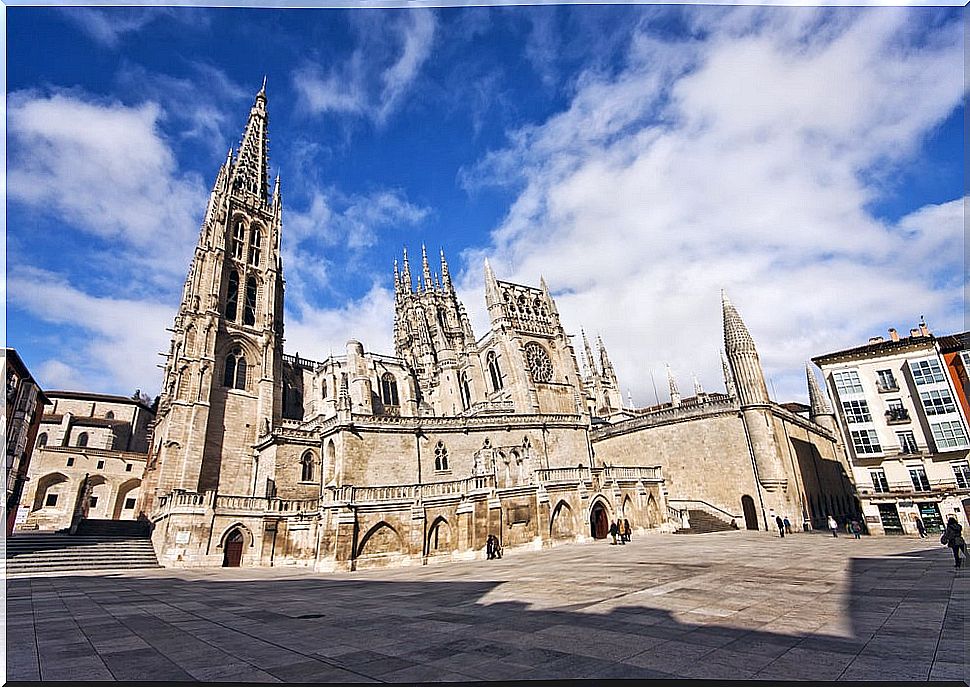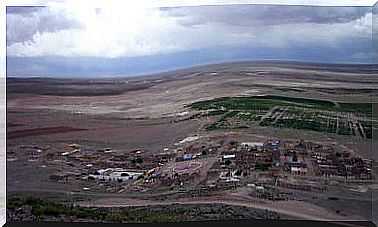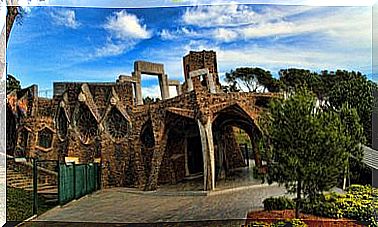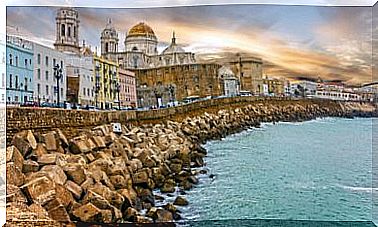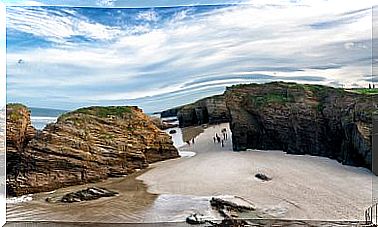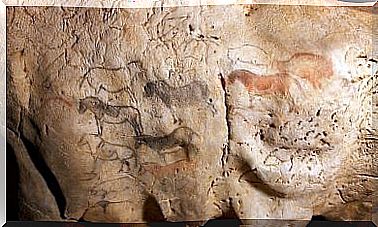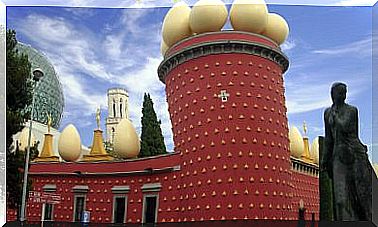Reims Cathedral, One Of The Gothic Jewels In France
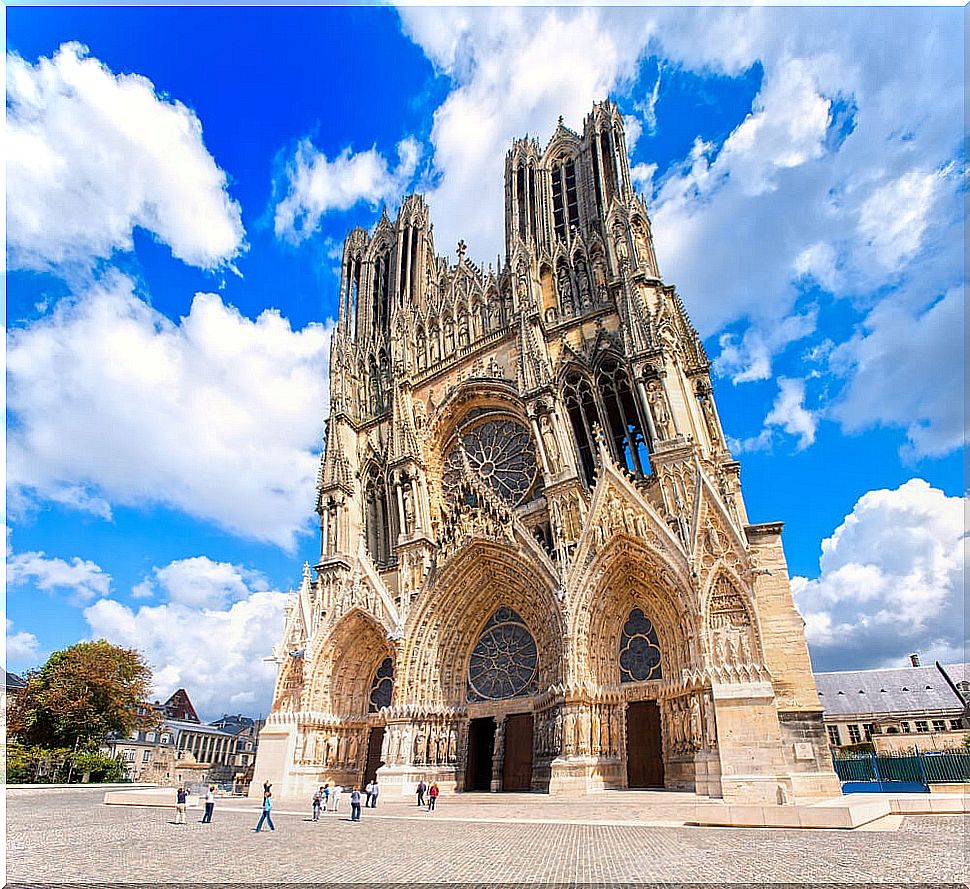
In the historic French region of Champagne, the cathedral of Reims was erected majestically throughout much of the 13th century. Today, it is the most recognizable icon of this city. In times of the French Revolution, its purely monumental character was consolidated with which it devastated the nearby constructions that at some time dared to reduce its prominence.
The origins
The foundations of the cathedral fever were established centuries before by the Romanesque, although this is more limited in the territory and much less colossal. Gothic art, as a legacy of the previous one, lays its foundations in a process of growth, economic prosperity and urbanism that began in Europe throughout the 13th century.
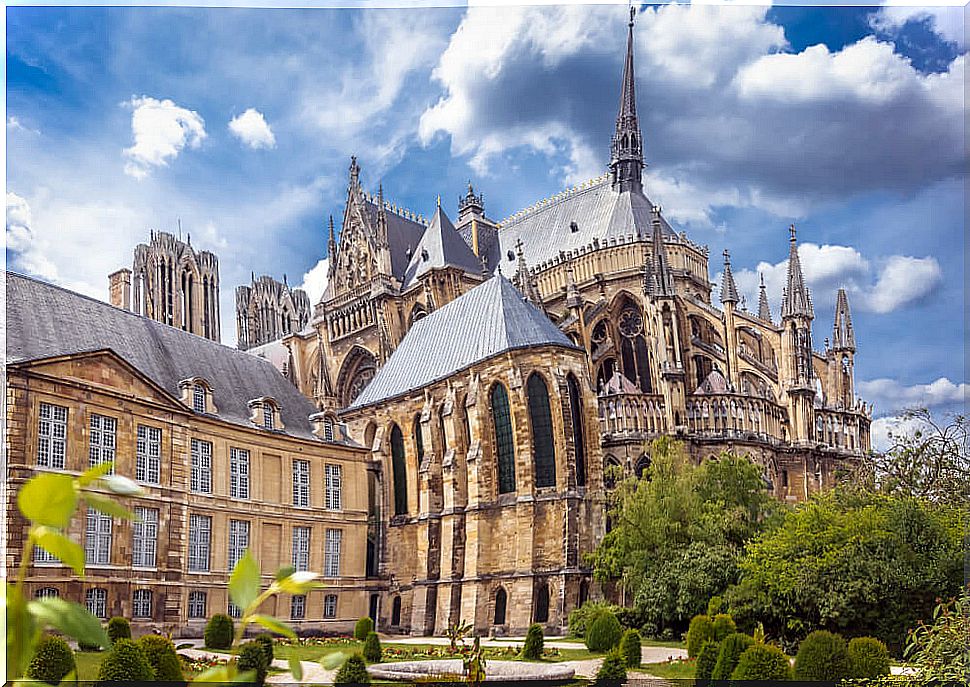
Linked to the cities or ‘boroughs’ a new social class, the bourgeoisie, was glorified. This had a power preceded by mercantile enrichment thanks to the consolidation of Christianity in much of Western Europe.
The bourgeoisie undoubtedly influenced urbanism, since it facilitated the expansion of culture and knowledge, until then in the hands of the rural monastic orders. Schools and universities were built that became, de facto , great centers of cultural transmission.
The Gothic plenitude of Reims Cathedral
Historians and art specialists generally mark the thirteenth and fourteenth centuries as the peak period of Gothic architecture. The colossal cathedrals became the paradigmatic symbol of architecture and it was France that displayed its most legitimate expression.
For this, new construction elements were used such as the pointed arch and the ribbed vault, which played a decisive role in offering greater height to the temples. The height, in turn, was compensated with a complex system of supporting elements such as flying buttresses and buttresses.
The third and no less important element was light. We talked about the light and color provided by the large stained glass windows that were applied in rose windows and windows distributed on the four sides of the cathedral.
Some details
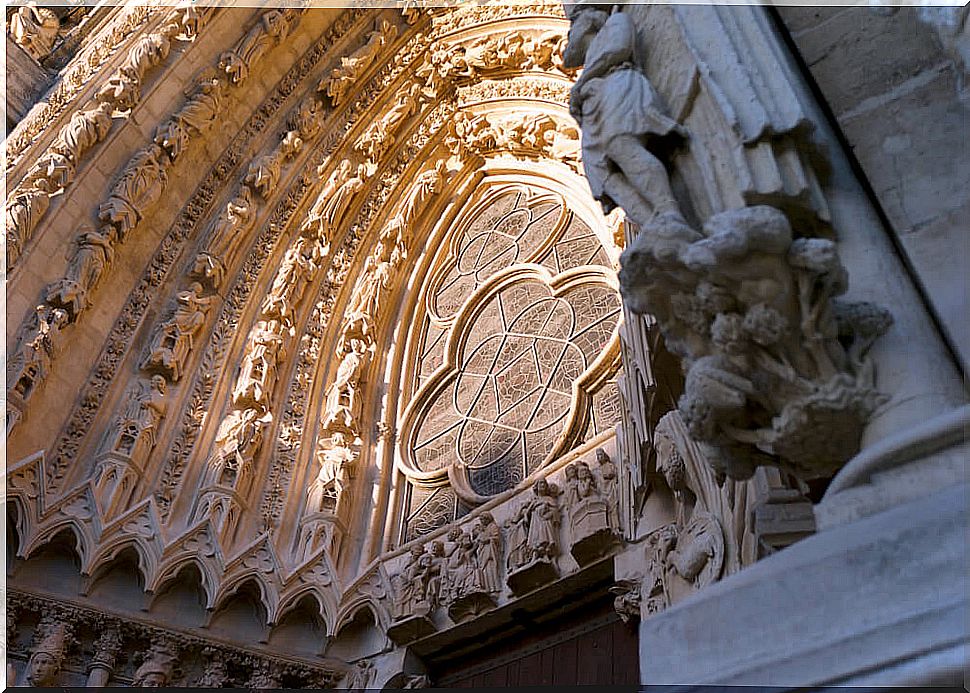
If we briefly review the technical sheet of Reims Cathedral, we see that it stands on a Latin cross plan in which the transept barely protrudes a few meters from the longitudinal arm, following the model of other cathedrals such as Amiens or Paris.
The temple has three naves covered with simple pointed vaults, it measures about 138 meters long and 30 wide. Its 86-meter towers can be seen from afar. The verticality that characterizes the structure of this temple is reinforced by its slender pillars and by the incorporation of pinnacles and gables, as well as by the presence of other openings and openings that are distributed throughout the façade.
Precisely, the façade has three large porticoes whose archivolts are ornamented with statues. The central one, dedicated to Santa María, like the cathedral, is crowned by a rose window that appears within a pointed arch and gives the façade an extremely genuine appearance. Above the rose window stands the ‘gallery of the kings’ and, above it, two imposing towers decorated with tracery.
The facades of the transept are also decorated with sculptures. The one to the north incorporates statues of the bishops of Reims, a representation of the Last Judgment and a figure of Jesus. Instead, the southern side has a magnificent rose window with the prophets and apostles.
Functionality and meaning of the Reims cathedral
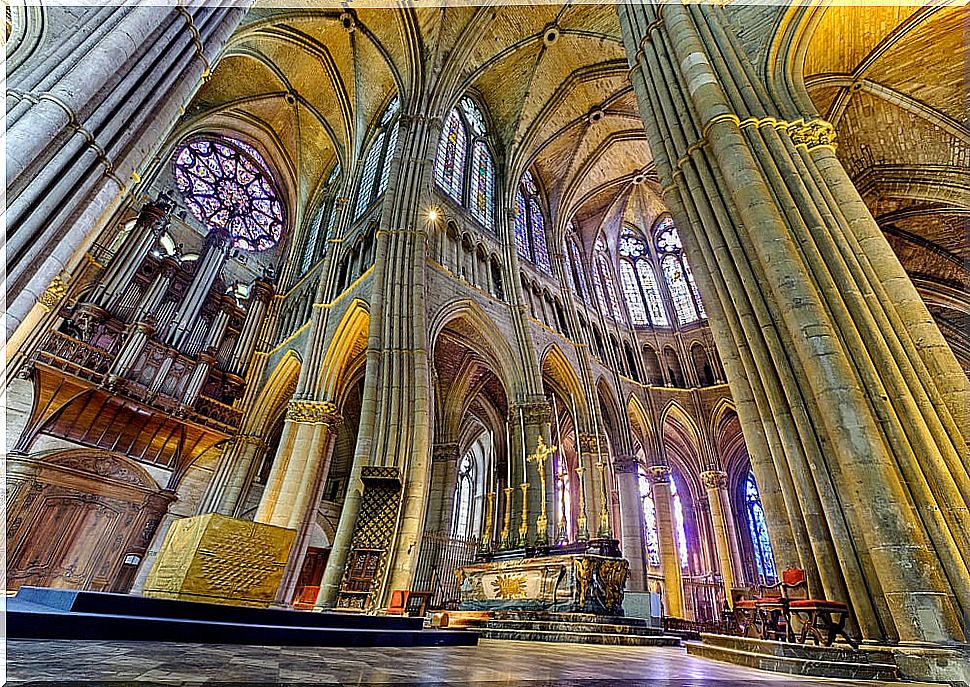
Reims Cathedral has played a very significant role throughout history. Here the French kings were crowned during the Old Regime. Perhaps that is its most realistic facet, but if we probe the moral side, we will realize that its sculptural ensemble constitutes an authentic ‘Bible in stone’ for its visitors.
The Annunciation or The Visitation are some of the varied groups that interact in harmony with the architectural base of this majestic temple. However, the temple has gone through all kinds of calamities, fires, bombings and reconstructions that throughout its history have not been able to diminish its beauty.
Its function, content and meaning contributed to Unesco declaring this temple a World Heritage Site in 1991 . And if its external appearance is fabulous, its interior is no less so and it is also worth discovering.
